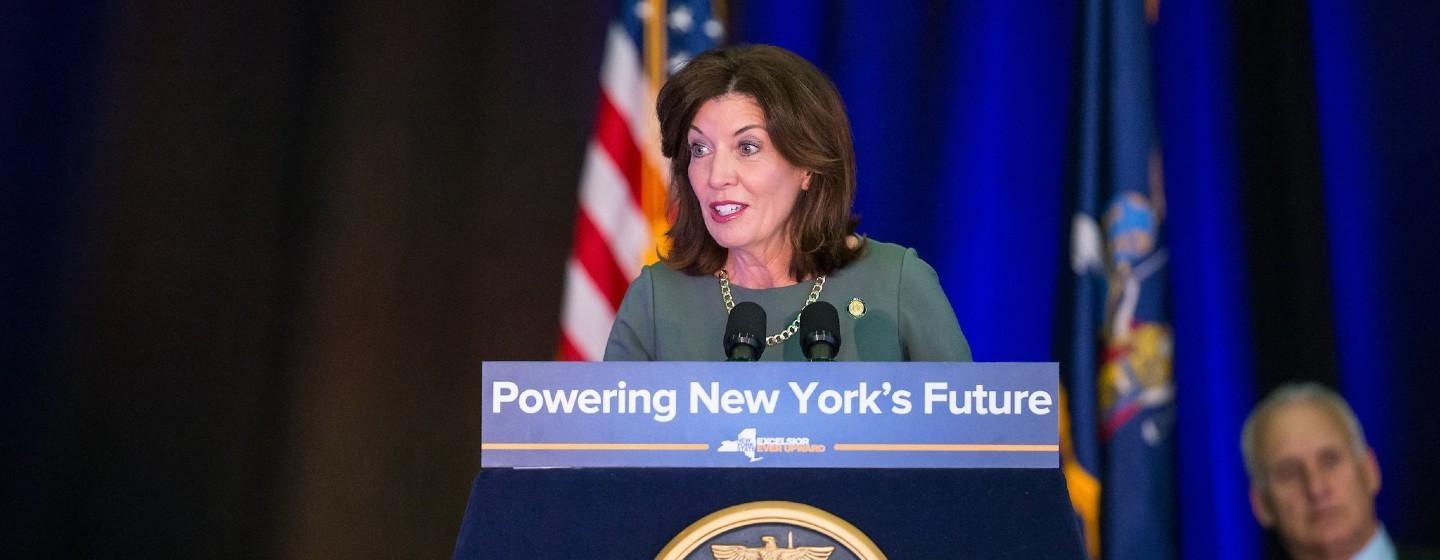Legislative Hearing on Bail Reform Data is Inconclusive

Legislative Hearing on Bail Reform Data is Inconclusive
A joint hearing by the New York State legislature attempted to get to the truth of how the state’s controversial 2019 bail reform laws have affected the state’s crime rate. But those who testified, including the state’s top criminal justice agency, revealed gaps in the way the data is collected that make it difficult to reach conclusions.
Debate around the bail reform laws, and other criminal justice changes enacted in the past few years by a democratic led state legislature and democratic governors, has become politically polarized, with republicans saying that the changes have led to a crime spike, and that the laws should be rescinded.
Democrats have said they need more data before making any major decisions about the laws. Senate Judiciary Chair Brad Hoylman-Sigal says the public has been “bombarded” with media campaigns that are based on “fear mongering”. He quoted the late US Senator from New York, Daniel Patrick Moynihan, saying the time has come to try to get accurate information.
“A past, elected official from New York once said everyone is entitled to their opinions, but not their own facts,” Hoylman-Sigal said. “And I hope we can dig down into the data today.”
Assembly Codes Committee Chair Jeffrey Dinowitz says what data has become available has been manipulated for political purposes.
“For the past couple of years, we've had many conversations around the newly available criminal justice statistics,” Dinowitz said. “We've seen people point to the same sets of numbers and draw completely different conclusions.”
But it quickly became apparent that there are flaws in the data that is available from state agencies who collect those numbers.
The head of the state’s Division of Criminal Justice Services, Rossana Rosado, began her testimony saying that New Yorkers have less to fear from crime than any other state.
“I want to highlight that New York remains the safest large state in the country, and incarcerates the fewest people,” Rosado told the lawmakers. “According to the most recent national statistics, according to the data, and not the narrative. “
But under questioning from lawmakers, Rosado and her aides conceded that the federal government has not put out any comprehensive data comparing state to state crime rates since before 2020.
The agency, known by its acronym DCJS, also collects data on arrest records, and whether a defendant appears for a court date. They say there don’t seem to be any differences since bail reform changes, and that there are even some improvements, when comparing court appearance rates between 2019 and 2021.
Assembly Judiciary Chair Charles Lavine asked Rosado about those numbers.
“It appears based on what we know, that the statistics for those who are released with bail or with conditions, and those who are released without bail and without conditions, or released on their own recognizance remain stable. Is that correct?’ Lavine asked.
“Based on the data, yes,” Rosado answered.
But DCJS officials, answering questions from other lawmakers including Assemblyman Michael Tannousis say the agency does not count in those statistics people accused of crimes who do not show up for what’s known as desk appearances, which are issued for misdemeanors and some felony charges. The agency begins counting only after someone has come back on the required date and been fingerprinted.
Others, including Assemblywoman Monica Wallace, followed up on critiques that the criminal justice reforms have led to less enforcement of domestic violence offenses, and that the Raise the Age law, which treats 16 and 17 year olds as juveniles, not adults in the court system might be leading to an increase in violent crimes by that age group. increased . They were told that data on domestic violence is collected by another state agency, and that family court records, where the cases of 16 and 17 year olds are processed, are often sealed and not available to the public.
DCJS officials testified that not all law enforcement agencies report their statistics to the agency, even though they are required by state statute to do so.
Days after the video was released showing Tyre Nichols being beaten by Memphis police, some lawmakers asked about statistics for the number of New Yorkers who died while being arrested.
They were told by Rosado that the NYPD has not submitted those numbers yet to the agency.
Senate Codes Committee Chair Jamaal Bailey asked Rosado about that.
“So the most recent data that I have is as of January 9, it did not have data from the NYPD,” Bailey said. “ Is that information available to you at this present time?”
“Not at this time,” she answered.
And Rosado says even when the agency gets those numbers, they are not broken down to show whether someone died while being arrested, only that they died while in police custody.
The hearing comes as Governor Kathy Hochul is preparing to release her state budget plan. It will include more revisions to the state’s bail reform laws, which have already been altered twice since the law took effect. Hochul wants to give judges more discretion to set bail in cases where people are charged with serious crimes.
Related

Hochul Presses for More Revisions to New York’s Bail Reform Laws
Governor Kathy Hochul is pressing for more changes to the state's bail reform.


